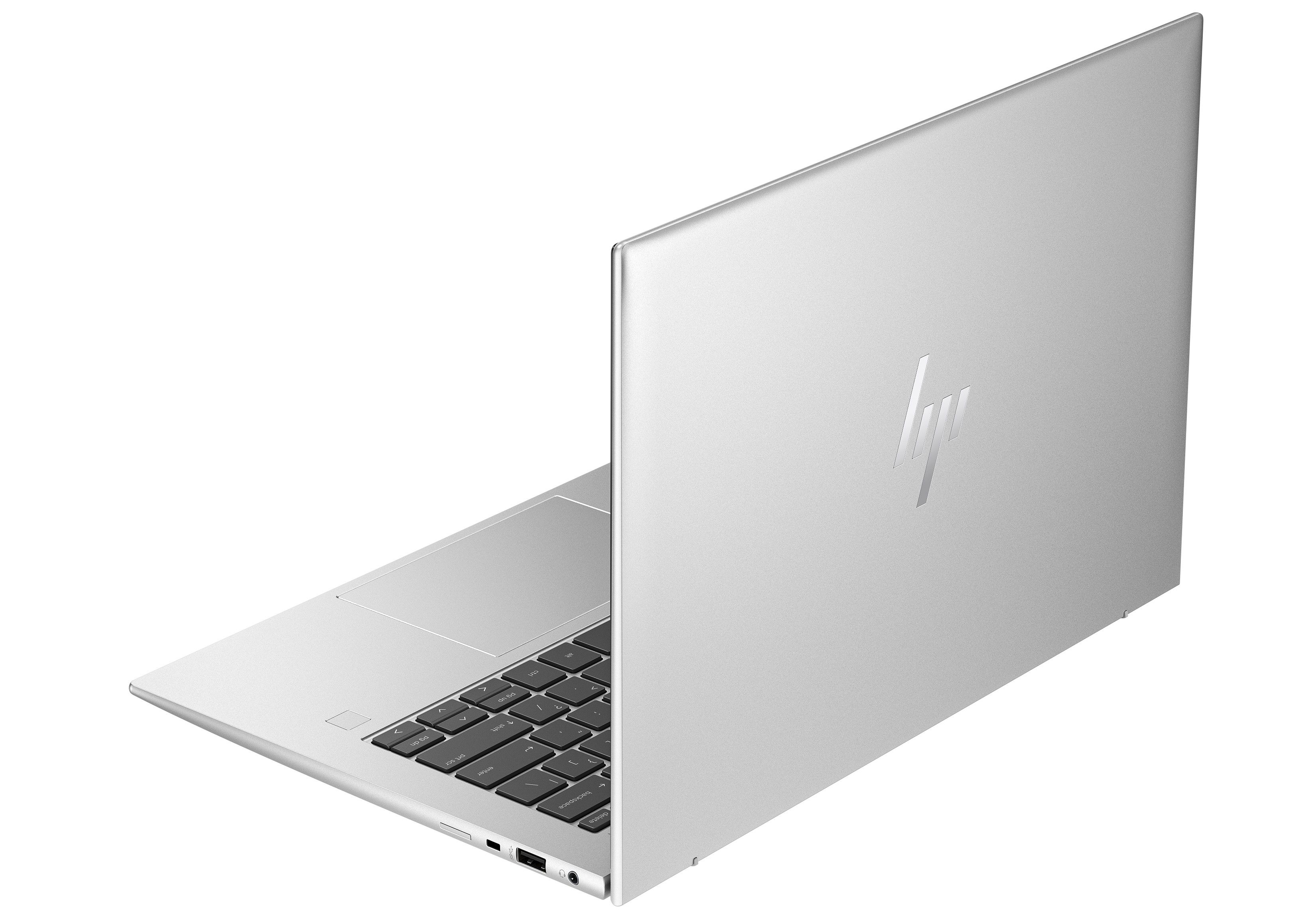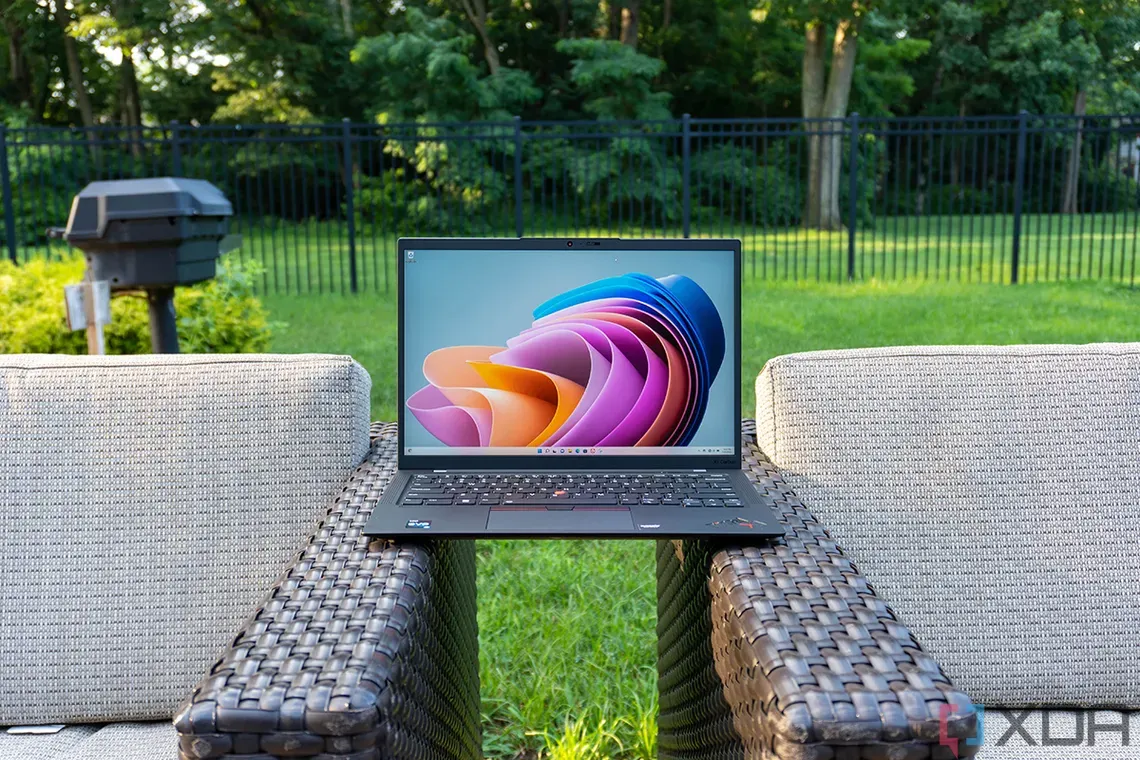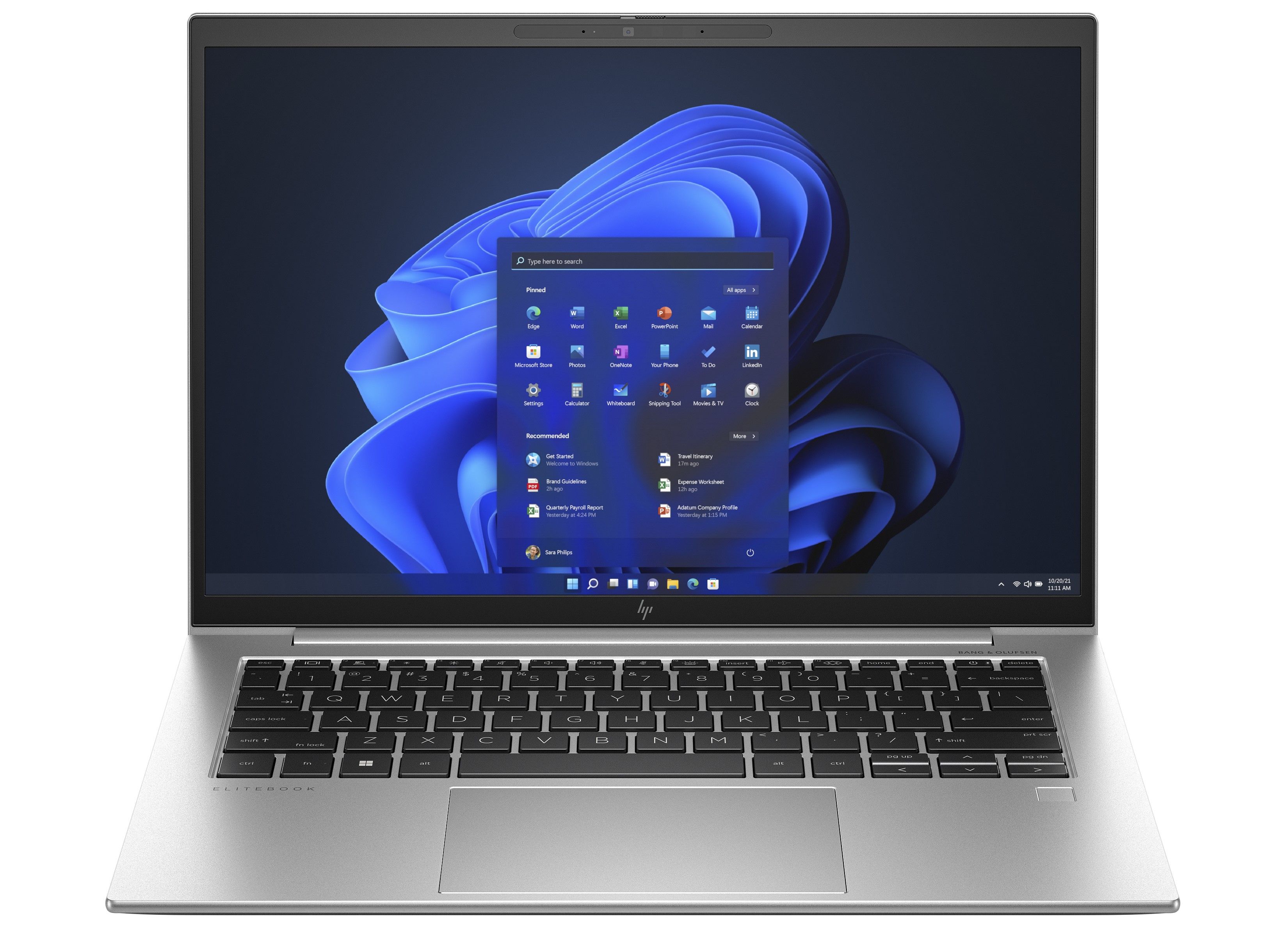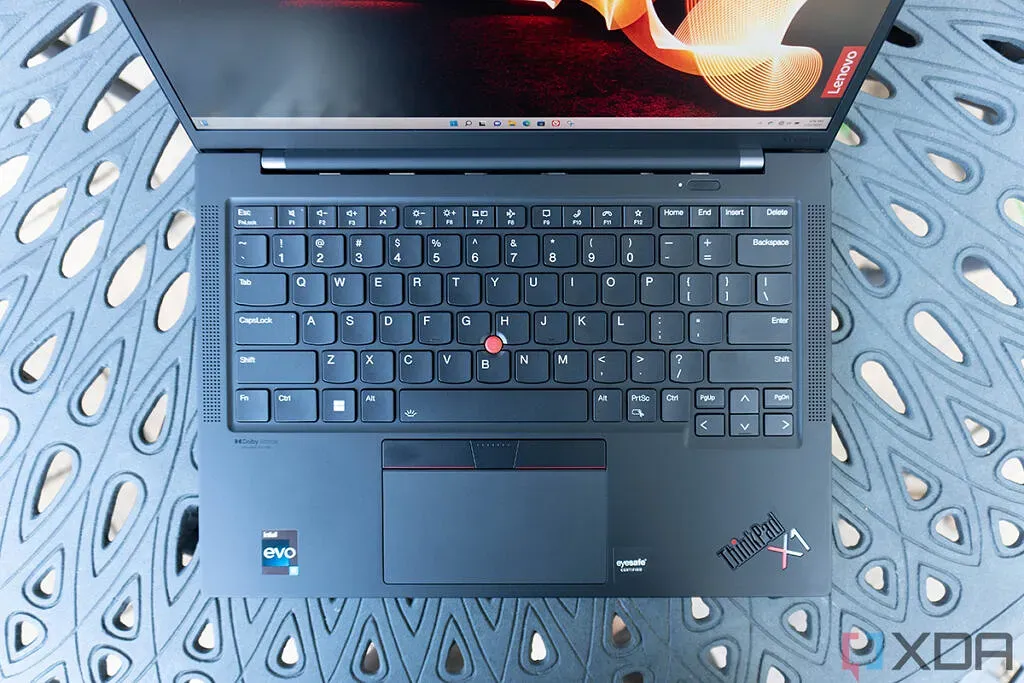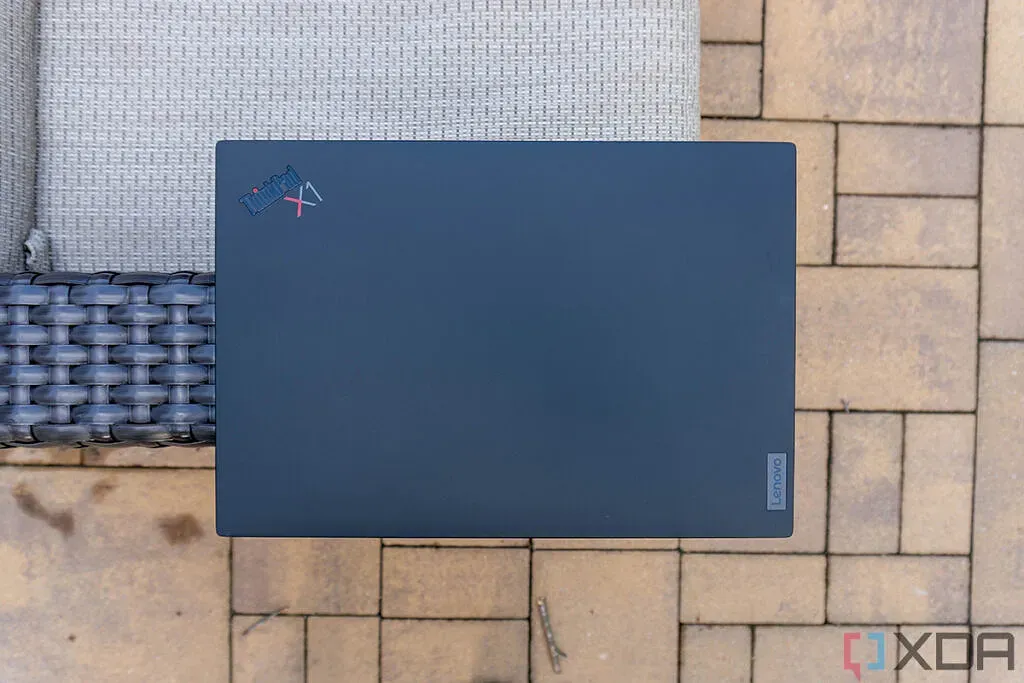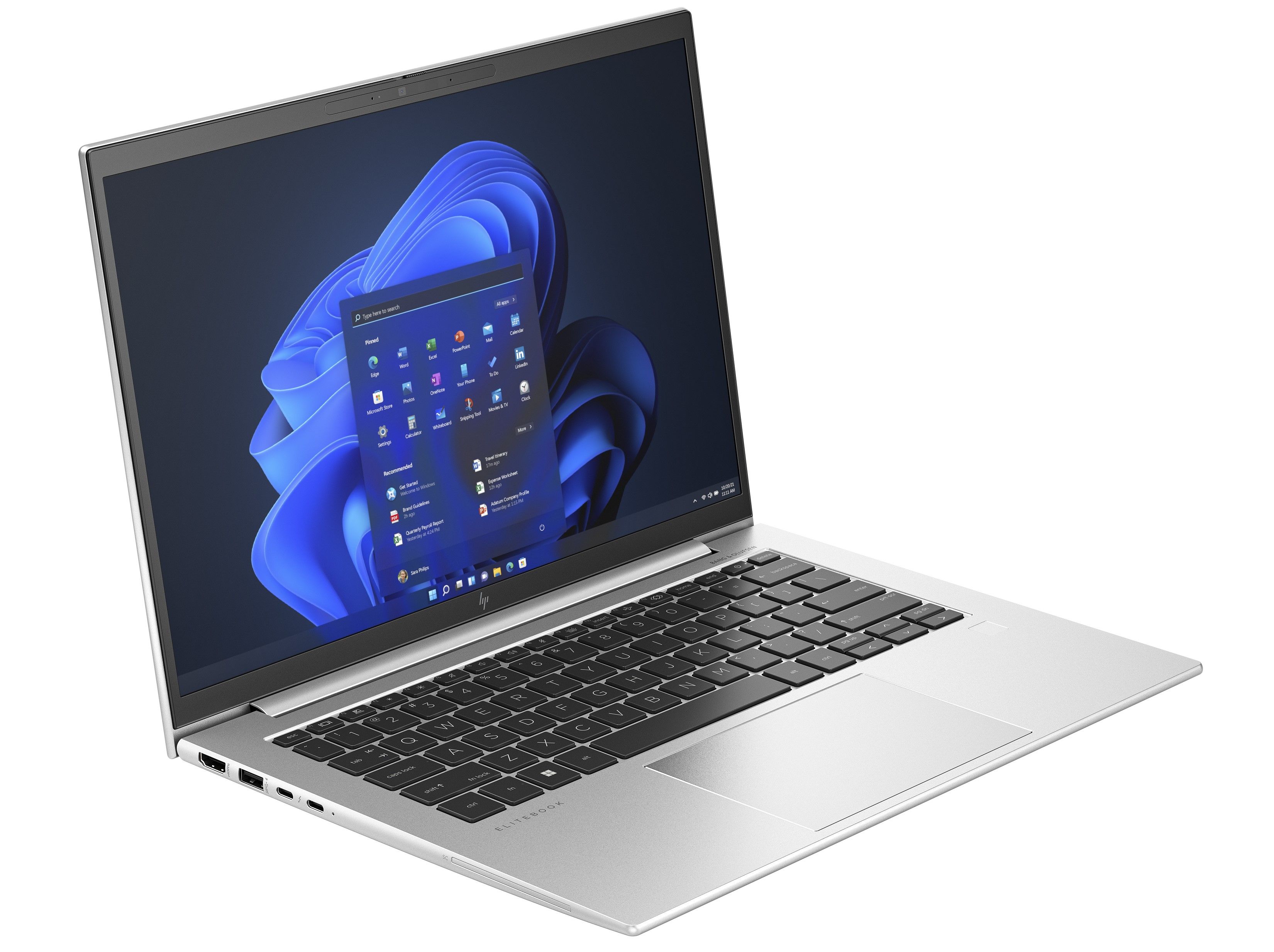Lenovo and HP are two of the biggest laptop brands in the world, and both have an especially big presence in the enterprise market. Lenovo’s ThinkPad X1 Carbon is one of the most iconic business laptops ever, and the HP EliteBook 1040 is another fantastic option. Both of these laptops have recently been refreshed with new specs, so we’re pitting the Lenovo ThinkPad X1 Carbon Gen 11 against the HP EliteBook 1040 G10 to help you choose the best one for you.
While both are business laptops that aim to look subdued and professional, they have quite a few differences between them, which may sway you one way or the other. The one you’ll likely notice the most is the design, but there’s much more to consider here. Let’s take a closer look.
Lenovo ThinkPad X1 Carbon Gen 11 vs HP EliteBook 1040 G10: Pricing and availability
First things first, if you’re planning to buy either of these laptops, you’ll have to wait a little longer. The Lenovo ThinkPad X1 Carbon Gen 11 was announced at the end of 2022, and it’s set to be available sometime in April. Pricing will start at $1,729, according to Lenovo.
Meanwhile, the HP EliteBook 1040 G10 is set to launch sometime in the spring, so these will likely launch within a similar timeframe. HP hasn’t revealed the starting price for this one, but like most of the company’s business laptops, it will probably be fairly expensive, though not too far from the X1 Carbon.
One thing to note is that both companies tend to offer pretty big discounts on their business laptops soon after they launch. They tend to fluctuate quite a bit, but you should be able to find them for cheaper than MSRP if you’re willing to wait a while longer. That’s especially true for Lenovo, which often has a ton of discounts on its website throughout the year.
Lenovo ThinkPad X1 Carbon Gen 11 vs HP EliteBook 1040 G10: Specs
|
Lenovo ThinkPad X1 Carbon Gen 11 |
HP EliteBook 1040 G10 |
|
|---|---|---|
|
Operating system |
||
|
CPU |
|
|
|
Graphics |
||
|
Display |
|
|
|
Storage |
|
|
|
RAM |
|
|
|
Battery |
|
|
|
Ports |
|
|
|
I hear |
|
|
|
Camera |
|
|
|
Windows Hello |
|
|
|
Connectivity |
|
|
|
Color |
||
|
Size (WxDxH) |
|
|
|
Weight |
2.48 pounds (1.2kg) |
<2.6 pounds (1.18 kg) |
|
Starting price |
$1,729 |
TBA |
Display: The ThinkPad X1 Carbon has OLED
Let’s start by taking a closer look at the displays of these two products. They’re both good in their own right, but there are some significant differences. Most notably, Lenovo will offer an OLED panel option for the ThinkPad X1 Carbon. This panel will come with 2.8K resolution (2880 x 1800), which is very sharp for a 14-inch display. Plus, since it’s OLED, you’ll get true blacks and more vivid colors than you would with an IPS panel.
ThinkPad X1 Carbon (Gen 10)
That’s just the top-tier configuration, but the base model should start with a Full HD+ (1920 x 1200) IPS panel, along with options for things like a privacy screen that prevents people around you from seeing what you’re looking at. Usually, there’s a 4K IPS panel, too, though Lenovo hasn’t revealed all the SKUs available for this year’s model just yet.
The HP EliteBook 1040 G10 gives you a high-refresh-rate panel option.
HP doesn’t offer an OLED option on the EliteBook 1040 G10 — that seems to be reserved for the HP Dragonfly G4 — but it does give you an interesting Quad HD+ (2560 x 1600) IPS display option. For a 14-inch laptop, this is just about as sharp as a 2.8K panel, and while you don’t get the benefits of OLED, this panel does have a 120Hz refresh rate. That means everything you do on this laptop will look much smoother, including scrolling and certain animations. It can also be useful for gaming, although you probably won’t want to do that on this machine.
HP EliteBook 1040 G10
The base configuration is also a Full HD+ panel, and just like the ThinkPad X1 Carbon, it offers a privacy screen. HP’s Sure View Reflect technology is arguably one of the best you can get for privacy screens, though, so that’s a potential advantage for the EliteBook 1040 G10.
HP also gives you a better webcam, with a 5MP sensor that supports 1080p video. While Lenovo’s laptop also supports 1080p video, the higher resolution of HP’s webcam means it can use features like auto framing without reducing the video resolution. HP has been using the best laptop webcams since 2022, so you can expect that to hold up.
Design: An iconic black or a subdued silver
While both of these laptops are meant to look professional and subdued for businesses, Lenovo and HP have radically different design languages. Lenovo’s ThinkPad lineup is incredibly iconic thanks to the black chassis and red accents, which is still here with the ThinkPad X1 Carbon. It’s certainly a look you’re bound to remember, and it even includes classic ThinkPad features like a TrackPoint and duplicate mouse buttons above the touchpad. That does make this a significantly smaller touchpad than what HP offers, however. This is a laptop that’s designed for long-time ThinkPad fans, so there are definitely a lot of people who prefer this look. Others might find it a little too old-school and outdated.
ThinkPad X1 Carbon (Gen 10)
And if that’s the case for you, the HP EliteBook 1040 G10 is probably the solution. HP uses a much more modern approach to its design, with the EliteBook 1040 G10 coming in a clean, silver chassis that looks and feels premium while still being subdued. We think it’s actually a bit boring, but most people who would buy a business laptop want something that won’t be too distracting in an office environment anyway.
Lenovo does win in portability, although the differences aren’t huge. The ThinkPad X1 Carbon starts at 2.48 pounds, which is a bit lighter than the 2.6 pounds of the HP EliteBook 1040 G10. Lenovo’s laptop is also thinner, at 15.36mm, compared to the 17.95mm thickness of HP’s competing product.
Ports and connectivity: A wide range
Business laptops are well known for their wide range of connectivity, and it’s no different with either of these laptops. The port selection is very similar between the Lenovo ThinkPad X1 Carbon Gen 11 and the EliteBook 1040 G10. Both have two Thunderbolt 4 ports, two USB Type-A ports, HDMI, and a headphone jack. HP’s laptop benefits from the option to add a Smart Card reader, which can be useful for authentication in certain business environments.
The two laptops are also nearly identical in terms of wireless connectivity. Both support Wi-Fi 6E and Bluetooth, and they also offer options for cellular connectivity. Even the cellular options are similar, with either 5G or LTE Cat16 models available. The laptops might use different modems, but neither company has revealed the full specifications for their laptops, so we can’t know that for sure yet.
Performance: The EliteBook 1040 has more efficient processors
Performance is an area that’s not overly interesting, considering the two laptops are so similar. Both come with 13th-generation Intel Core processors, although there are some differences. Lenovo has yet to reveal specific processor SKUs on the ThinkPad X1 Carbon, but based on the previous generation, we can assume the company will be using P-series processors for the most part, with a 28W TDP and up to 14 cores and 20 threads .
ThinkPad X1 Carbon (Gen 10)
HP is also adding P-series models to the EliteBook 1040 G10, which are new this year. Indeed, last year’s model only had U-series processors with a 15W TDP, but now HP’s laptop can match the ThinkPad X1 Carbon. However, HP will still offer U-series versions of the EliteBook 1040 G10 so that you can choose between the additional performance of the P-series or the better power efficiency and thermals of the U-series.
That may be especially useful considering the ThinkPad X1 Carbon has a larger battery. It comes with a 57Whr unit, while the HP EliteBook 1040 can be configured with either a 38Whr or a 51.3Whr battery. While various factors affect battery life, if all the other specs are equal, Lenovo’s laptop should last longer for continuous use.
Lenovo’s laptop should last longer for continuous use thanks to its larger battery.
However, HP has another ace up its sleeve with a feature called Intelligent Hibernate, which is useful for leaving your computer in sleep mode overnight, for example. Intelligent HIbernate means that while the EliteBook 1040 will use Windows modern standby while in sleep mode throughout the day, it will go into hibernation mode at the end of the day to save more power. This will greatly extend battery life in sleep mode, meaning you can do some work in the morning instead of opening your laptop to find out it’s dead.
Rounding things out, both laptops come with up to a 2TB PCIe 4.0 SSD and 64GB of RAM. While both laptops have upgradeable storage, only the EliteBook 1040 also has upgradeable RAM. The ThinkPad X1 Carbon has it soldered onto the motherboard.
Lenovo ThinkPad X1 Carbon vs HP EliteBook 1040 G10: Which should you buy?
As with any decision, it’s ultimately up to you which of these laptops you prefer, and they’re both excellent devices for the purposes they try to serve. They deliver high-end performance, robust connectivity options, and great displays.
One of the big factors when deciding between is definitely the design. If you’re a fan of the classic ThinkPad design, you obviously want to go with Lenovo’s laptop, whether for the looks or the TrackPoint that many still love. On the other hand, HP’s laptop is a bit more modern and has a larger touchpad.
You may also like the ThinkPad X1 Carbon more thanks to the OLED display, which is more vibrant and colorful. On the other hand, HP gives you a high-refresh-rate panel option, a better webcam, and it has an arguably better privacy guard if that’s what you’re looking for.
It’s all about looking at your needs and which one ticks more boxes. Either way, you’ll have to wait a while longer before you can buy either of these laptops. If you can’t afford to wait, maybe check out the best HP laptops and the best ThinkPads you can buy today.
